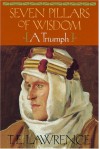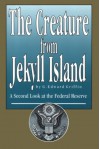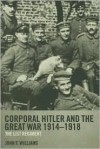Currently reading
THE "RACE OF ACES" - THE TRIUMPHS & TRAGEDIES

A few weeks ago, while seated in my cubicle at work having lunch, I came across "RACE OF ACES" quite by accident -- courtesy of The New York Times. Being an aviation buff, I could hardly contain my excitement from reading the NYT review of the book.
"RACE OF ACES" is a story that begins during the dark days of the Pacific War in the summer of 1942. From the attack on the U.S. Pacific Fleet at Pearl Harbor (December 7th, 1941) to the middle of 1942, Japan's military machine had run riot in the Far East and Pacific, handily defeating the various American, British Empire, Australian, and Dutch efforts to thwart its advances into Burma, Malaya and Singapore, the Philippines, the Dutch East Indies, and South Pacific.
There was one United States Army Air Force (USAAF) outfit that also played a role in trying to stem the Japanese tide of victory from April to July 1942 by which time it was placed in the hands of a new commander (General George Kenney) who was determined to restore its morale. This was the Fifth Air Force, whose fighter units in New Guinea with their P-39 Airacobra fighters were hard pressed to contest Japanese airpower because Japan's Zero fighters outclassed the P-39s in combat.
Upon arriving in New Guinea, Kenney was determined to reverse the fortunes of the Fifth Air Force and instill confidence in his fighter pilots to take on Japanese Army and Navy air units and win. As a way of achieving this goal, Kenney promoted what would come to be called the "Race of Aces", a challenge to every fighter pilot in the Fifth Air Force to surpass the victory score of America's Ace of Aces of World War I, Eddie Rickenbacker, who had achieved 26 victories in aerial combat against the Germans on the Western Front. Indeed, Rickenbacker himself, who visited Kenney and the Fifth Air Force near the end of 1942, offered a case of bourbon to any fighter pilot who surpassed his score. Kenney also offered an additional case of bourbon. The race was on.
It was also at the time of Rickenbacker's visit that a new, revolutionary USAAF fighter plane began to arrive in New Guinea in appreciable numbers to challenge Japanese air power in the Southwest Pacific. This was the twin-engined P-38 Lightning, which would go on to prove itself more than a match for the Zero and other Japanese fighters that were pitted against the Lightning in combat.
"RACE OF ACES" highlights 5 USAAF fighter pilots -- Richard Bong, Tommy MacGuire, Neel Kearby, Charles MacDonald, and Gerald Johnson -- who, through their prowess in aerial combat and their mounting victory scores, would grab the nation's attention as they contended to be the first to exceed Rickenbacker's score. What also makes this book so utterly compelling is the way Bruning recaptures the esprit de corps, the strong sense of unity of purpose and teamwork among the USAAF fighter units under Kenney's command (between pilots and ground crews), and the tensions, excitement, and perils of fighter-to-fighter combat.
Of the 5 pilots previously mentioned, it was Colonel Neel Kearby, a proud and boastful Texan who commanded the 348th Fighter Group --- which arrived in New Guinea during the summer of 1943 -- who was an exponent of the ruggedly built P-47 Thunderbolt, which was not looked on with favor by many of the fighter pilots in the Southwest Pacific. Kearby, through his own example and the fierce loyalty he inspired from those who served under him in the 348th Fighter Group, set out to show what the Thunderbolt was capable of doing. In one scrap with the enemy, Kearby shot down 6 Japanese fighters, for which action he would be awarded the nation's highest decoration for bravery in combat, the Medal of Honor.
"RACE OF ACES" also shows to the reader the high costs of war and how they impacted on the 5 aforesaid aces, their fellow fighter pilots in the Fifth Air Force, as well as the ground crews in V Fighter Command between 1942 and 1945. These are the costs that would be passed on to wives, sweethearts, mothers and fathers, brothers and sisters -- and even unto future generations.
I cannot help but feel after reading this fantastic book a deep and abiding sense of gratitude for the sacrifices made by those Americans (like my Dad - who served as a GI in Europe from 1944 to 1946) who served in the military during the Second World War. We, who live today, owe them so much in the unending struggle to make the United States a better, more just and compassionate country for all who reside within it.













